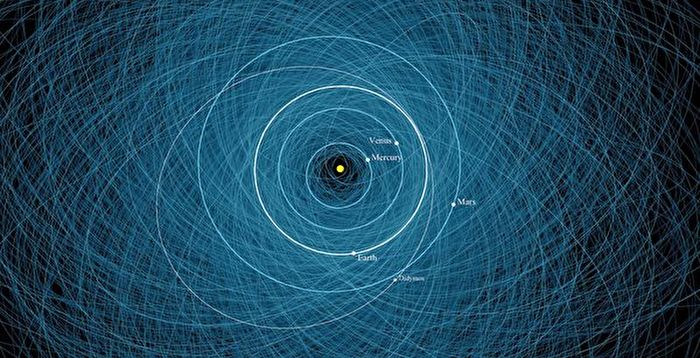[Epoch Times December 11, 2021](Epoch Times reporter Di Rui compiled a report) So far, NASA has discovered nearly 28,000 near-Earth asteroids from the data collected by the telescope. This number is still increasing at a rate of approximately 3,000 per year.
With the launch of a new generation of telescopes, NASA knows that this number will increase substantially. To monitor the orbits of so many celestial bodies at the same time, and to discover the risk of collision with the earth in time, we must need the help of detailed astronomical theory and reliable software. For the past two decades, NASA has been using a software called “Sentry” developed by Jet Power Laboratory (JPL) in 2002.
Javier Roa Vicens, head of the Sentry software project, said: “The first generation of Sentry has been very powerful and has been in operation for about 20 years. It uses very good mathematical algorithms. Within an hour, the probability of a newly discovered asteroid hitting the Earth within the next 100 years can be reliably calculated-this is no longer simple.”
Vicens said that the recently upgraded Sentry-II (Sentry-II) is more powerful and can quickly calculate the impact probability of all near-Earth asteroids. More importantly, it includes astronomical factors that were not considered by the first-generation software. In addition, the calculation results are more accurate-it can accurately assess the probability of an impact that is only a few in ten million.
Sentry II considers two new astronomical factors. One is the influence of the sun’s heat on the orbits of asteroids; the other is the influence of the earth’s gravity on these celestial bodies when the asteroid is very close to the earth.
The first factor is also called the Yarkovsky effect (Yarkovsky effect). Asteroids, like general planets, can also rotate. During the rotation, there will be day and night changes on it. When the heated side enters the night and begins to cool down, the infrared energy it emits will cause a small thrust to the asteroid. Scientists call this the Yalkowski effect. This has almost no impact on the asteroid’s orbit in the short term, but within a span of decades or hundreds of years, the impact will accumulate to a considerable extent.
Another improvement to the Sentry generation algorithm is how the asteroid’s gravity will deflect it when it passes close to the Earth. Scientists have found that in this case, the changes of the asteroid’s orbit will have great uncertainty, and the Sentry generation software needs manual intervention and adjustment at this time. And the second generation of Sentry uses a new algorithm, in this case can also make a correct prediction.
Vicens said that although the asteroids affected by the above-mentioned special factors account for a small proportion of all near-Earth asteroids, with NASA’s new NEO Surveyor and Chile’s Vera. With the opening of the Rubin Observatory (Vera C. Rubin Observatory), the number of asteroids that we need to quickly evaluate will increase significantly. We must be prepared. “
The research was published in The Astronomical Journal on December 1. ◇
Editor in charge: Ye Ziwei
.
